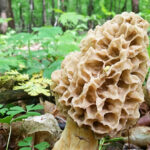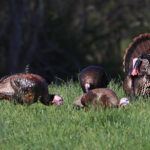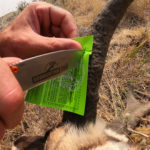A lot of hunters tend to think that whitetail bucks work the doe herd much like a stud horse that gets to cover all the ladies around. However, studies show this is just not the case.
Check out what Brian Murphy of HuntStand has to say about buck breeding success in the latest video in his Murphy’s Law on Whitetails series.
The Difference in Bucks and Bulls
As Murphy mentions in the video above, hunters need to realize that whitetail bucks are not like bull elk. Elk are herd animals. A bull rounds up a harem of cows and tends them as they are ready. “The whitetail is a Solo Specialist,” says Murphy. “They work one-on-one chasing an estrous doe, and then staying with her for 24-48 hours to breed her during that peak estrous period. Once completed, he’ll move on in search of the next receptive doe.”

What Bucks Do the Breeding?
Studies and research from the staff at Mississippi State show that 2/3 of fawns are sired by bucks 3 1/2 years old, or older. That leaves 1/3 of the fawns to be sired by bucks from the age of 1 1/2 to 2 1/2 years old.
The research also showed that the average buck sired 1-3 fawns per year that survived into the following year’s population.
Studies also indicate that when it comes to lifetime breeding success, the average buck only contributes to 6 fawns, or less, over the course of their lifetime.
Simply put, there is not a enough time during the peak estrous cycle for one buck to service all the does. The task is spread out over a number of bucks, each doing their share.
The idea of a stud buck doing all the breeding is simply not true.

 By
By 



